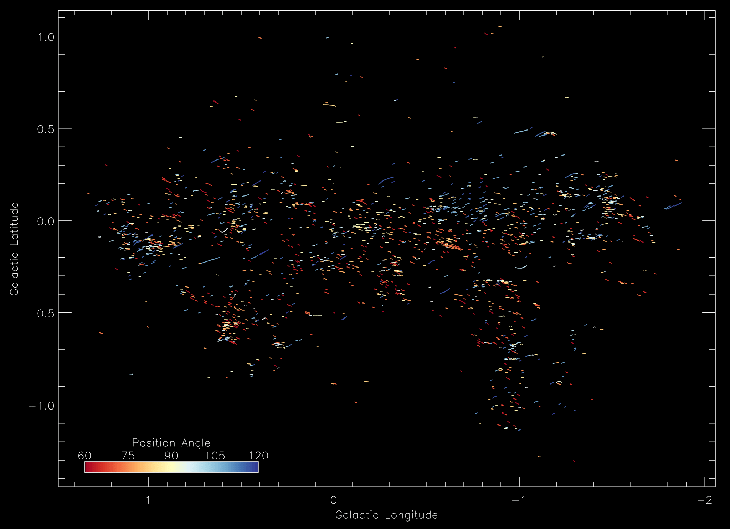
Astronomers have made a remarkable discovery of numerous enigmatic filaments that are directed towards the supermassive black hole residing at the heart of our Milky Way galaxy. This intriguing finding has the potential to unveil novel insights into the enigmatic depths of this cosmic abyss.
These peculiar filaments, resembling spokes radiating from a wheel, are located approximately 25,000 light years away from our planet.
“It was a surprise to suddenly find a new population of structures that seem to be pointing in the direction of the black hole,” Professor Farhad Yusef-Zadeh said. He is from Northwestern University.
“I was actually stunned when I saw these. We had to do a lot of work to establish that we weren’t fooling ourselves. And we found that these filaments are not random but appear to be tied to the outflow of our black hole.”
“By studying them, we could learn more about the black hole’s spin and accretion disk orientation. It is satisfying when one finds order in a middle of a chaotic field of the nucleus of our galaxy.”
The colossal black hole known as Sagittarius A* possesses an astonishing mass that is four million times greater than that of our Sun. Situated in a radial arrangement, the filaments found near Sagittarius A* stretch for less than 10 light years and resemble the familiar dots and dashes of Morse code. These filamentary structures adorn only one side of Sagittarius A*.
The recent revelations owe their existence to advancements in technology, particularly the remarkable capabilities of the MeerKAT telescope, operated by the South African Radio Astronomy Observatory (SARAO).
To expose the filaments, believed to have formed approximately six million years ago, the researchers employed a technique that eliminated background noise and smoothed out image distortions. This process allowed them to isolate the filaments from their surrounding structures.
“The new MeerKAT observations have been a game changer,” Prof. Yusef-Zadeh said. He is the lead author of the paper that was published in The Astrophysical Journal Letters. “The advancement of technology and dedicated observing time have given us new information. It is really a technical achievement from radio astronomers.”
He believes the filaments that are directed radially toward the black hole appear to be connected to activities that are taking place in the galactic center.

Emanating thermal radiation, they exhibit the ability to propel material within a molecular cloud. Their orientation consists of several hundred in the vertical direction, contrasting with only a few hundred horizontally.
This recent breakthrough is shrouded in uncertainty, and the endeavor to unravel its enigmas has only just commenced. At present, only conjectures regarding the mechanisms and origins of this newfound population can be contemplated.
“We think they must have originated with some kind of outflow from an activity that happened a few million years ago.”
“It seems to be the result of an interaction of that outflowing material with objects near it. Our work is never complete. We always need to make new observations and continually challenge our ideas and tighten up our analysis.”
Black holes emerge from the collapse of a dying star, which implodes due to the immense gravitational force exerted by its own mass. The gravitational pull becomes so overwhelming that not even light can break free, rendering black holes invisible entities. As a consequence of this process, a supernova occurs, manifesting as a tremendously forceful explosion unleashed by the dying star.
Astronomers hypothesize that supermassive black holes, billions of times larger than our sun, reside at the cores of vast galaxies, encompassing a central presence in these galactic systems.
What are your thoughts? Please comment below and share this news!
True Activist / Report a typo


